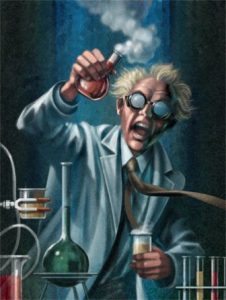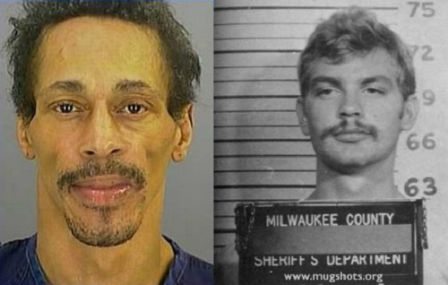The City of Los Angeles is made up of over one-hundred separate and distinct ethnic, racial, and religious communities. L.A. cops have to navigate all of them…if they want to survive.
Community…a side of your sweet little hometown you never knew existed. The part of town where survival is a way of life, and that doesn’t include soccer practice, ballet recitals, and shopping for things you don’t absolutely need. It’s that place where you don’t dare go once the sun disappears in the afternoon. And if you do find yourself accidentally passing through, well, you lock your doors and get the hell out as fast as you can, not even stopping for red lights. Yes, it’s that very real place where drug dealers and gangs control everything; where residents don’t dare go outside after dark; where kids go hungry, and bleed, and die.
I used to patrol one of those neighborhoods, and yes, I’ve stood nose-to-nose with gang members who had no respect for my badge and uniform. And I knew that they could send a bullet my way at any time. Sure, I’d been on the receiving end of numerous “warning shots,” but it was a place I couldn’t leave. The people there depended on me to keep them safe. So I stayed and I fought the bad guys and I laughed with the good guys. But I haven’t been back since I left the business a few years ago.
Well, I hadn’t been back until last night when Southland took us all there. And what a ride it was.

Cooper and Tang. What can I say? Sounds like the title of a new TV series, doesn’t it (Premiering tonight, TNT’s new hit show, Cooper and Tang).
Anyway, last night’s episode opened with Cooper and Tang rolling up at the scene of a house fire. Coop hops out and shouts, “Where is he? Where IS he!” And the answers to who and where, well, we’d have to wait on those, as usual. And I like the way the show sets us up like this at the beginning, leaving the audience with the opening scene bouncing around inside our heads during the entire episode.
Ben, Ben, Ben. He still can’t get away from punching that girl in the nose, even while between the sheets with his latest, as Sammy put it, “Ben Bunny.” He’s getting mixed reviews about the snoot-punching, from one woman (the Ben Bunny) who is turned on by Ben’s rough side, to another young woman who tells Ben to pick on someone his own size. And that “lady” further emphasized her point by telling him that she’d “knock his b****-a** out.” So there.
For the record, Badge Bunny is the original term that Sammy transitioned into Ben Bunny. A Badge Bunny is someone who has a total, often obsessive, fascination with men (or women) in uniform. The fascination is often so extreme that officers find themselves as stalking victims. Police academy instructors warn new officers about Badge Bunnies. Supervisors warn new officers about the dangers of becoming involved with Badge Bunnies. And other officers sometimes warn their new partners about Badge Bunnies. Why? Because the fatally-attracted Bunnies sometimes follow the officers around while they’re at work, from call to call. They show up at the department, bringing gifts, baked goods, and cards and flowers. They send things in the mail (personal, pre-worn clothing – yep, that particular piece of clothing), etc.
Now, not all “Badge Bunnies” are over the top with their love of a person in uniform. To some, it’s a normal attraction. But the others…WHEW!
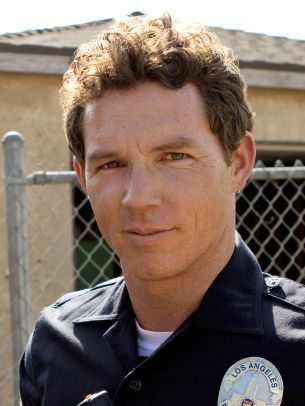
Sammy just can’t seem to let go of his grudge against career bad guys, the ones who hurt people with their every action. So he does whatever it takes, legally (well, teetering on the edge between legal and illegal) to get that vermin off the street. And, if that sometimes involves a little revenge for the death of his former partner, then so be it.
I must say that Shawn Hatosy (Sammy) is brilliant as this character. And I’m pleased that he’s back in uniform because he really excels in this role. Working with a few “Sammy’s” over the years gave me a unique perspective into his character…they all want to do their job and do it well. They know the business inside and out, and they’re ten-feet-tall-and-bullet-proof. Not scared of anything or anybody. When I assembled a team to conduct high-risk entries for drug raids, I wanted as many Sammy’s as I could find to go with me. I’d take this Sammy with me too. And I wouldn’t have to worry about my back, not even for a second.
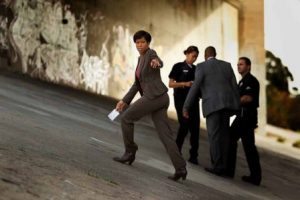
Lydia and Ruben are called to work a possible homicide, a woman’s body found beneath a bridge. Lydia takes one look and says, “Wasn’t quick and it wasn’t painless. Whoever did this had a lot of rage inside them.” She’s right. Lots of physical damage to flesh and tissue, such as multiple stab wounds, indicates rage—the killer was angry with the victim, or the victim reminded the killer of something that caused him his own personal pain. Lydia also noticed the victim’s tan lines, a great indicator that her jewelry had been taken by her killer, or someone else, a scavenger, had removed it, postmortem.

CoopTang gets a call about a burglary-in-progress. They respond and catch the guy inside the home. The thug runs outside and jumps to the ground below and runs away. The officers are questioning the young woman who reported the burglary when her father, a Jewish man, walks up and tries to end the questioning. The crime occurred in a strict Orthodox Jewish home on Saturday, and the woman’s father wanted nothing to do with anything that went against his religious beliefs. The daughter, however, was determined to help catch the guy who’d stolen her family’s possessions, so she takes a ride with the CoopTang team, hoping to spot the crook. And they do, and they find her belongings in the trunk of his vehicle.
I’ve done this many, many times in the past—take someone for a ride, hoping to spot and identify a crook. And normally, if and when you spot the bad guy, the witness/victim often offers and sometimes tries to dish out a little “street justice.”
The scene where Tang and Cooper confront the thief would make a great training film. If you have the show recorded, go to the frames where Cooper is talking to the suspect and Tang is standing off to the side. She’s standing in a position that’s textbook-perfect.

Gun side away from the suspect. Weight distributed properly, with one foot forward, knee slightly bent. A little more weight on the back foot. Gun hand at ready. Non-gun hand at her belt buckle with the thumb resting at the buckle (this keeps the free hand from doing what comes natural…going in the pocket). The free hand is also instantly ready to fend off an attack, or to grab tools from her belt, if needed.
By the way, Lucy Liu is absolutely great in this role. She is a natural-born cop. Well (I’ll settle back to earth for a moment), I guess she, like the others on this show, is a really good actor. And I doubt she’d trade her earnings for a cop’s paycheck. But if she ever finds herself out of work…
I have to say it again, the attention to detail on the show is incredible.
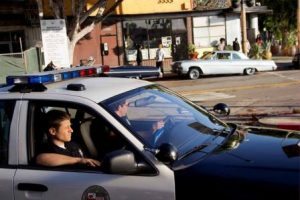
Ben and Sammy are assigned to sit across the street from a gathering of people, many of whom are known thugs/criminals, including “the ruler of the neighborhood,” a thug named Crawford. The duo, Sammy and Ben, are there to show a police presence. Yep, it’s a crappy assignment, especially when you’ve been ordered to NOT interfere, knowing that all sorts of felony arrests are within your grasp.
Sammy sees a rival gang member’s car pass by, taunting Crawford’s entourage. So, when a call becomes available, Sammy takes it, knowing that the two gangs would probably clash once the patrol car is out of sight. Again, a little bit of justice…Sammy style.
Now, I once was took it upon myself to clean up a neighborhood like this one. The elderly residents were scared, coming outside only during the morning hours when they knew the bad guys were sleeping. I assembled a team of several officers. I mean several officers, dozens of cops from multiple jurisdictions. I also asked a few canine handlers to bring along their biggest, meanest, nastiest dogs. You know the ones, the dogs with teeth like daggers and really loved the taste of fresh drug dealer meat.
Once I had the team together we hit the streets, on foot. We walked through the neighborhood, pushing the crooks out. And boy did we ever rack up on finding dope and guns merely lying on the ground for the taking. It was like a narcotics/firearms Easter egg hunt.
Anyway, the “Crawford” of this particular neighborhood decided he’d had enough (we were ruining his business) and came out to confront me. Oh, I forgot to mention that I’d sent word to him that I was coming for him..
So my personal Crawford and I experienced a Sammy and Crawford nose-to-nose discussion. But, when this guy threatened me and put his grubby little hands on me, well, you saw the scene last night where Sammy politely used Crawford’s head to tap out a little Morse code on the telephone pole, right? Yep, I did the same to my guy, using a 4×4 stop sign post instead. So, it wasn’t long before the good folks had their neighborhood back, but it took lots of manpower and lots of long, long nights of battling it out with lots of people who had no respect for anything or anyone but themselves.
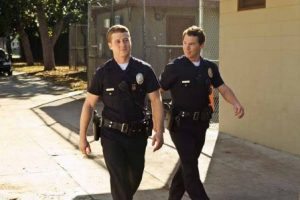
Okay, back to Sammy and Crawford…
Crawford’s rivals drop by and a large shootout occurs, but Crawford and a buddy manage to survive. The two crooks run from Sammy and Ben (don’t these guys know not to run from these two track stars!). You know, I once had a trainee back when I was a FTO (field training officer) who could run like a deer. If I saw a suspect running from us all I had to do was open the passenger door and “release the hound.” The rookie’s feet hit the ground in high gear and, by the time I’d managed to amble over, he’d have the guy on the ground ready to handcuff. Ah, the good ‘ol days…
So, Sammy catches Crawford, handcuffs him to a telephone pole (the on-the-ground, palm-up handcuffing technique was pretty good, by the way), and then set out to help his partner. Now, normally you don’t handcuff anyone to anything and then leave them there for the buzzards to pick clean. However, Sammy’s partner, who, by the way, is still considered a rookie, was in a foot pursuit of a possible murderer. He’s lost all contact with Ben, sight and sound, so his number one priority at that point was to assist/help/save/rescue, his partner.
This was a real, life-threatening situation, folks. Therefore, Sammy did the right thing. And, as a bonus, Crawford was turned into a skewer by the very people he’d been bullying for so long. Sure, a cop’s job is to protect everyone, including the bad guys. But Ben was priority number one. Crawford’s death was an unfortunate circumstance that he’d placed himself in by running.
So, after nearly an hour of holding the safety strap inside the LAPD cruisers, we’re winding down. The shift is over and Sammy and Ben are in a cop bar, unwinding. And Sammy (un)officially presents Ben the DCA (Dumb Cop Award) for stupidity above and beyond the call of duty. Sammy then crowned him with a pointed IDIOT cap, a fitting ceremony for the officer who punched a teenage girl in the nose while on camera. Yep, the award was for being on camera when he popped the girl who’d assaulted him, not for the actual hit.
And, after the full circle around the city, we’re back with Cooper and Tang who’ve responded to the house fire, a real inferno at this point. And the opening questions are finally answered.
Who—a child rapist. Where—the home of the rapist. Why? Because finales end that way.
What a fantastic, realistic show.

* Want to fact check what you’ve seen on Southland? You might want to try this:

Police Procedure and Investigation by Lee Lofland




